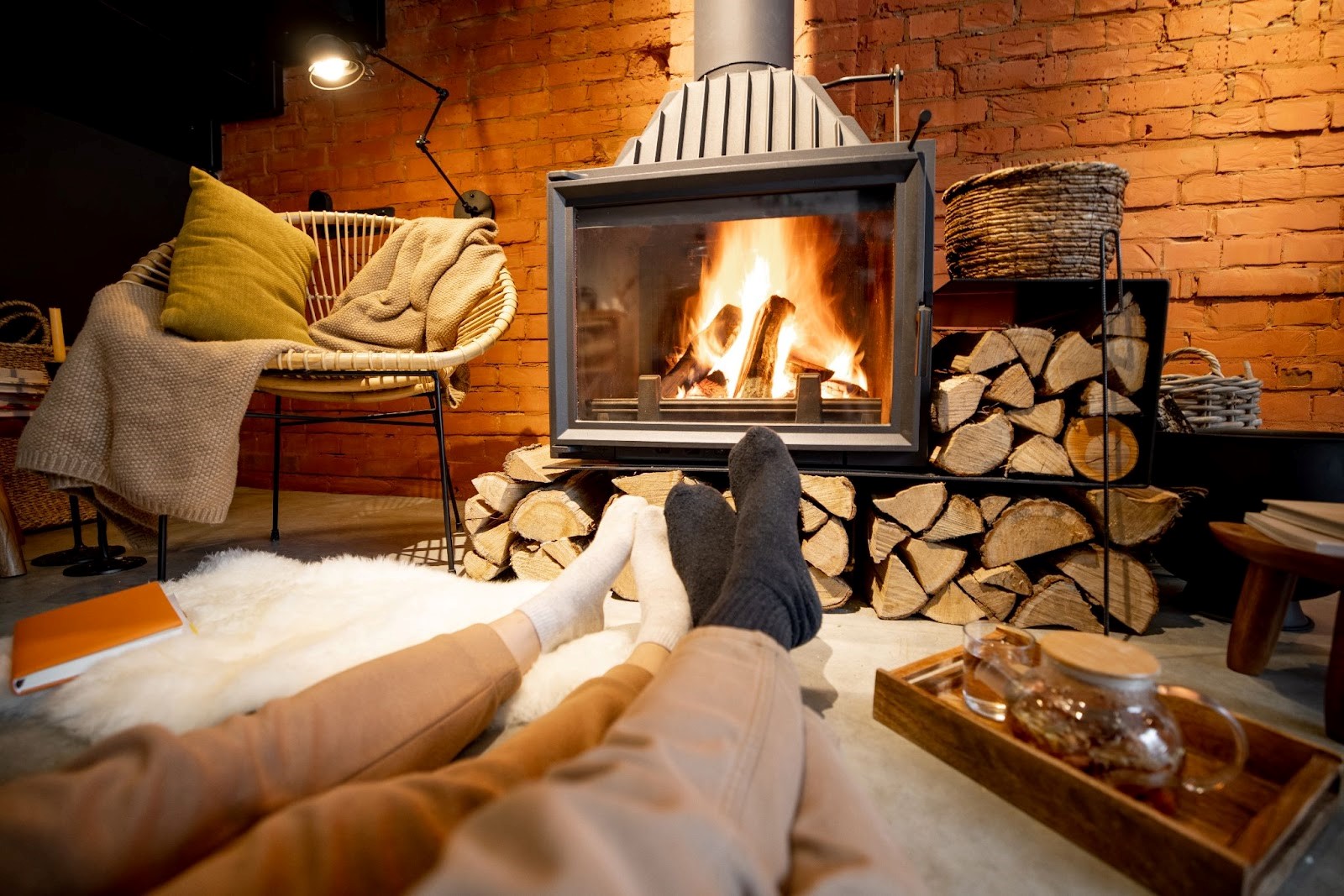Could my wood burning fireplace cause my house to be colder?

Wood-burning fireplaces, while cozy and nostalgic, can inadvertently lead to the exchange of warm indoor air with cold outdoor air. The mechanism behind this phenomenon lies in the principles of airflow and ventilation within a building. Given our climate zone in Atlanta we don’t use wood burning fireplaces that often, but there are some things to be aware of, if you do.
When a wood-burning fireplace is in use, it creates a draft as it draws air for combustion. In an attempt to feed the fire with oxygen, the fireplace pulls in air from its surroundings. If the home lacks proper ventilation or sealing, the fireplace may inadvertently draw air from inside the home and that air gets replaced with cold outdoor air.
Older homes, in particular, are prone to having random leaks in the building envelope—gaps or openings that allow air to escape or enter. These leaks could be present around windows, doors, or other openings in the walls. As the fireplace draws in air to sustain the fire, it exploits these leaks, pulling warm indoor air out and replacing it with cold outdoor air.
The concept of negative pressure plays a role in exacerbating this issue. As the fireplace consumes indoor air, it creates a negative pressure zone within the house. This negative pressure can prompt cold outdoor air to infiltrate the home through any available openings, further contributing to the loss of warm air.
To mitigate this problem, homeowners can take several measures. One effective approach is to address and seal any leaks in the building envelope. Weatherstripping around doors and windows, caulking gaps in walls, and ensuring proper insulation are crucial steps in creating a more airtight home.
Installing a fireplace insert can also help. These inserts are designed to improve the efficiency of traditional fireplaces by reducing heat loss and ensuring better control over the combustion process.
Furthermore, incorporating a dedicated combustion air intake for the fireplace can minimize the reliance on indoor air for combustion. This ensures that the fireplace pulls in air directly from the exterior, reducing the likelihood of creating negative pressure within the home.
In conclusion, the allure of a wood-burning fireplace comes with the caveat of potential heat loss due to the exchange of warm indoor air with cold outdoor air. By addressing building envelope leaks, considering a fireplace insert, and implementing measures to control air intake, homeowners can enjoy the warmth of a crackling fire without sacrificing the comfort of their indoor environment.
Book your free insulation evaluation today with Koala Insulation of Central Atlanta or call us at (404) 994-1287 we would love the opportunity to help.
Find Your Location


Get a quote


